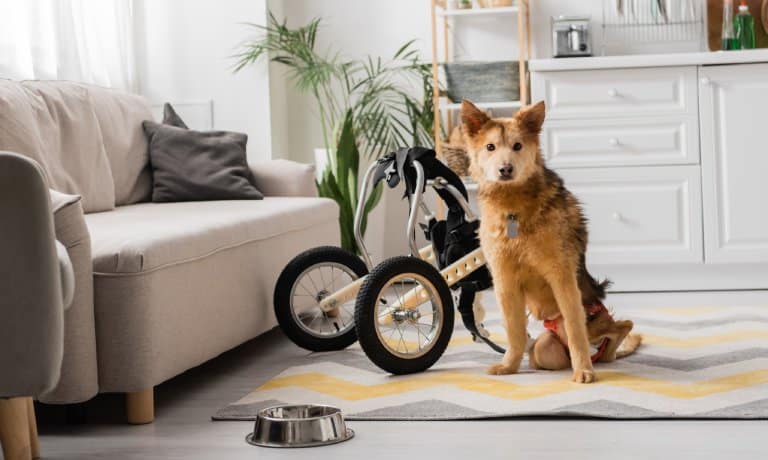
No two pets are alike, and their environment shouldn’t be, either. Creating a supportive and safe environment for disabled pets ensures they enjoy a comfortable, fulfilling life. Whether your pet has mobility challenges, sensory impairments, or other special needs, there are practical, thoughtful ways to tailor your home to their requirements.
To help you get started, this guide covers how to create a safe space for pets with disabilities, tailored to different pets’ needs.
Mobility-Friendly Modifications
For pets with limited mobility, replace stairs with gentle ramps, particularly at entrances or beside furniture. Non-slip rugs and traction mats reduce fall risks on hard floors. Built-in, low-entry beds and elevated feeding stations minimize strain on joints and muscles, making daily routines easier.
Supportive Design for the Visually Impaired
Blind pets benefit from consistency and subtle environmental cues. Avoid frequently rearranging furniture, which can cause confusion or injury. Use textured rugs to mark pathways and scent markers—like essential oils dabbed on cotton balls—to indicate areas like food bowls or doors.
Creating a Home for Deaf Pets
Deaf pets thrive with visual and vibrational cues. Flashing lights connected to doorbells or alarms or vibration pads on the floor can alert them to key events. In open spaces, create visual boundaries using contrasting colors or different flooring textures. Also, position beds and feeding stations where they’re easily visible from multiple angles to reduce surprise and disorientation.
General Home Renovations To Consider
If you’re planning more significant upgrades, there are plenty of pet-friendly home renovations to consider. Widened, slip-resistant hallways allow safer movement for pets with mobility or vision challenges. Built-in feeding stations, pet-safe storage for medications, and low lighting for sensitive eyes are likewise thoughtful additions.
Adding pet cameras or smart feeders helps monitor and care for pets requiring regular medication or check-ins. Plus, enclosed patios or screened porches give disabled pets safe access to the outdoors without the risk of wandering.
Designing Accessible Outdoor Areas
A well-designed outdoor area is just as important as the interior setup. Sturdy ramps and level walking paths are necessary for pets that struggle with stairs or uneven terrain. Use soft, pet-safe ground cover like clover, turf, or mulch instead of gravel or stone.
Consider using weather-resistant outdoor mats or heated pads in colder weather. On hotter days, a shallow pool can provide a cool-down spot or gentle hydrotherapy. Lastly, remove hazards like sharp plants or loose debris, and create quiet zones with fencing, shade, or shelter to support sensory-sensitive pets.
Creating Comfort and Confidence
Understanding how to create a safe space for pets with disabilities means fostering physical comfort and emotional security. With creativity, planning, and compassion, your home can become a haven that supports your pet’s independence while keeping them safe. Whether it’s better lighting, safe outdoor access, or cozy, designated spaces, each change reflects your love and support.




